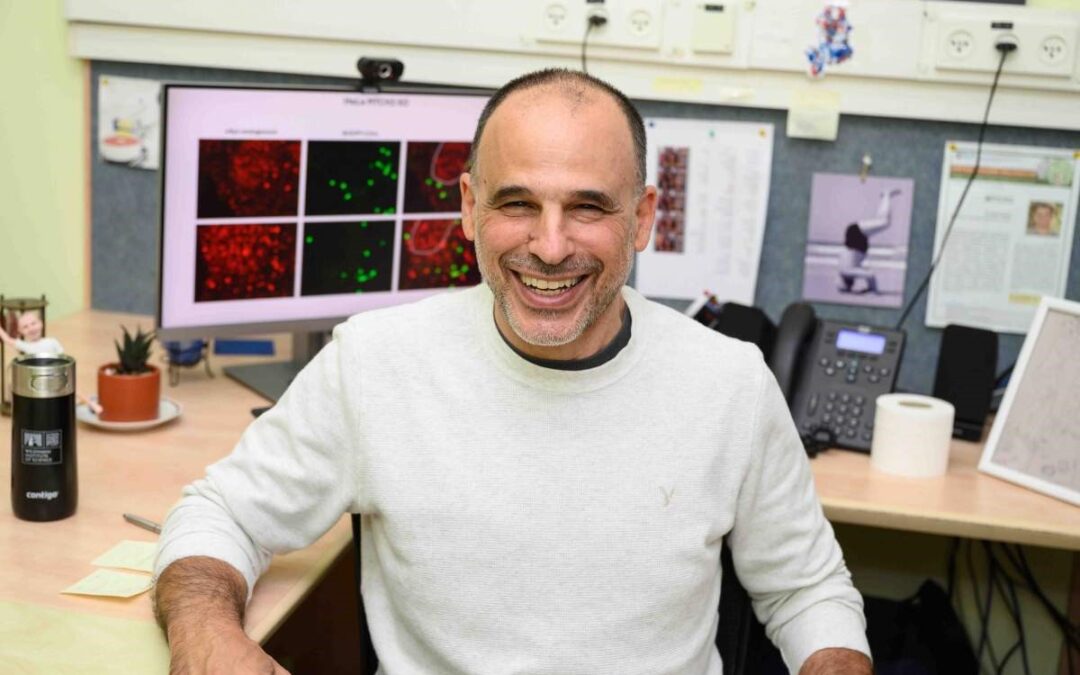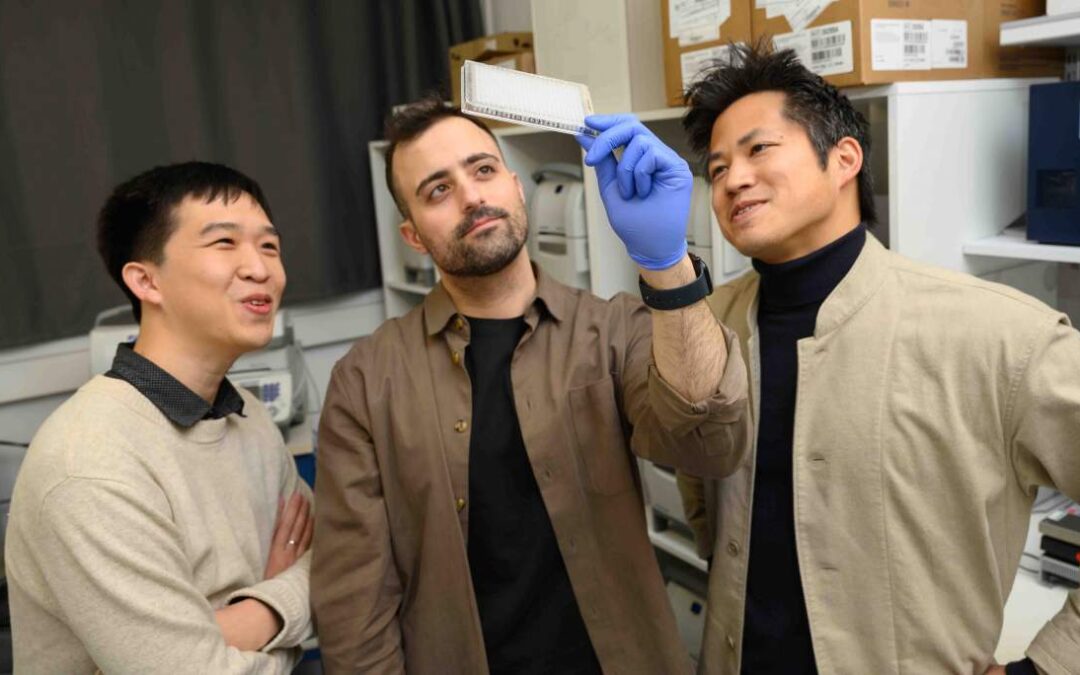Weizmann Institute of Science researchers have uncovered physical laws explaining why cracks in materials break their symmetry while spreading. These findings lay the groundwork for the design of more resilient materials which could have significant implications for the design of structures and physical systems.
The materials that make up all the structures and physical systems around us, including our own bodies, are not perfect – they contain flaws in the form of tiny cracks. When one of these cracks suddenly and rapidly spreads, it can be life-threatening, but the rich, intricate patterns formed by cracks can also be spectacular and intriguing. Until now, physicists have struggled to provide a theoretical framework explaining why cracks often branch out and deviate from their expected path, slowing down as a result. Two recent studies from the Weizmann Institute of Science bring order to the disorderly propagation of cracks and show that, although each crack may seem unique, there are quantitative physical parameters that shape the propagation process and explain the formation of asymmetrical crack patterns.
Decades of controlled experiments in material failure have shown that even when a perfectly symmetrical crack is created under tensile forces, it spontaneously loses symmetry as it propagates, veering off course and moving more slowly than expected.
“These observations are the exact opposite of what we would expect based on theoretical calculations, which predict that even if we introduce a small obstacle in the path of a symmetrical crack under tension, the crack should return to a smooth, symmetrical trajectory,” said Professor Eran Bouchbinder.
“Given the experimental evidence, we assumed that there must be missing links – overlooked physical properties that could account for the observed behaviour.”
In one of the two studies – published in Nature Communications and led by Dr Yuri Lubomirsky, then a doctoral student in Bouchbinder’s group in Weizmann’s Chemical and Biological Physics Department – the researchers used a computer model to simulate the propagation of cracks in three-dimensional materials.
“To understand crack propagation, we focused on the crack tip – the point where the material transitions from intact to fractured,” explained Lubomirsky.
“While moderate conditions prevail throughout most of the material most of the time – meaning its behaviour can often be understood by averaging its properties – the crack tip is governed by extreme conditions,” he said.
“Physical quantities such as force, temperature and velocity are so large there that they can be mathematically treated as approaching infinity, and the usual physical rules no longer apply. We postulated that the crack tip might reveal the hidden properties that explain asymmetrical crack propagation.”
The researchers’ arduous seven-year search for these missing physical properties was at times frustrating.
“Ultimately, the breakthrough came from introducing significant disorder into the simulations – a factor previously overlooked in dynamic theories of material failure. We ran numerous simulations using advanced computing capabilities and observed that the crack initially moves straight until it reaches a point where it splits locally and then changes direction,” Bouchbinder said.
“The challenge was to extract from the vast amount of data the basic principle explaining why the crack branches out and deviates from a smooth, symmetrical path. One day, I asked Yuri to cross-reference two graphs, and that’s when it clicked: The intrinsic disorder of real-world materials, combined with the extreme conditions at the crack tip, turned out to be the missing link.”
The rules of cracks
The laws of physics explain the behaviour of uniform materials fairly well, but most materials in the world are not truly uniform. Glass, for example, appears smooth and homogeneous, but a closer look at its particles and the connections between them reveals a structure lacking consistent order. This means that the internal forces acting within glass vary from one region to another.
Until now, engineers and scientists trying to understand fracture dynamics had relied on averaged material properties and thus failed to explain why cracks break symmetry. Bouchbinder and Lubomirsky realized that the answer lies in the extent of internal disorder – that is, how much the material’s strength varies from place to place.
The researchers applied varying fracture forces to their computer model and studied the relationship between crack propagation and material disorder. They observed that when fracture forces were weak, cracks propagated symmetrically without branching and were largely unaffected by disorder. However, when fracture forces were moderate, cracks became sensitive to disorder: When the crack tip reached a weaker region, local instabilities developed, causing the crack to split locally instead of continuing in a straight line. These local branches competed with each other – one branch would stall while the other would continue as the main crack, often changing direction.
Retrospective examination of these regions revealed microcracks where the secondary branches had been arrested. In other words, in this regime the extent of branching depended directly on the degree of disorder. Finally, when fracture forces exceeded a critical threshold, the crack no longer halted at points of instability but split into entirely separate branches that widened and penetrated deeper into the material. In this high-force regime, disorder once again played a minor role. The deviation of cracks from their symmetry axis and the formation of branches come at an energetic cost: A larger amount of material is broken, and the crack’s velocity decreases relative to the speed it would have reached had it remained smooth and symmetrical.
Another phenomenon commonly seen in cracks – also linked to symmetry breaking – is the formation of steps composed of two interacting fracture surfaces. In a follow-up study published in Physical Review Letters, the researchers investigated how this pattern forms. They found that step formation depends not only on the degree of internal disorder but also on external tensile forces’ slight deviations from perfect symmetry.
In addition to the tensile forces that open the crack, there are almost always perpendicular forces causing the crack’s faces to slide past each other in a rotational motion. Incorporating both types of force and the internal disorder into their mathematical model, the scientists succeeded in predicting and explaining the emergence of the step pattern.
“These discoveries provide a physical and mathematical framework for understanding material failure through crack dynamics that we encounter in everyday life,” said Bouchbinder.
Lubomirsky added: “Our findings could also help in designing materials that are more resilient to catastrophic cracking. We show that increasing disorder can slow crack propagation – an insight that could have significant implications for the design of structures and physical systems.”
“Natural materials such as bones and teeth have evolved to resist failure, and it’s possible that their internal disorder is one of the key factors behind their resilience. This is where our findings also shed new light on the workings of nature,” he concluded.
A computer simulation based on a theoretical model illustrates the asymmetric fracture dynamics of a three-dimensional material subjected to medium-to-high tensile forces. The crack (green surface) propagates from right to left, while tensile forces driving the fracture act perpendicular to the crack. The camera moves along with the crack tip, keeping it approximately stationary within the frame throughout the simulation. Initially, when the crack velocity is relatively low, propagation is nearly symmetric, with only occasional small deviations from the symmetry axis. As the crack accelerates, larger deviations appear, including significant secondary branching. All deviations stem from internal disorder in the material, which is not visible in the simulation











